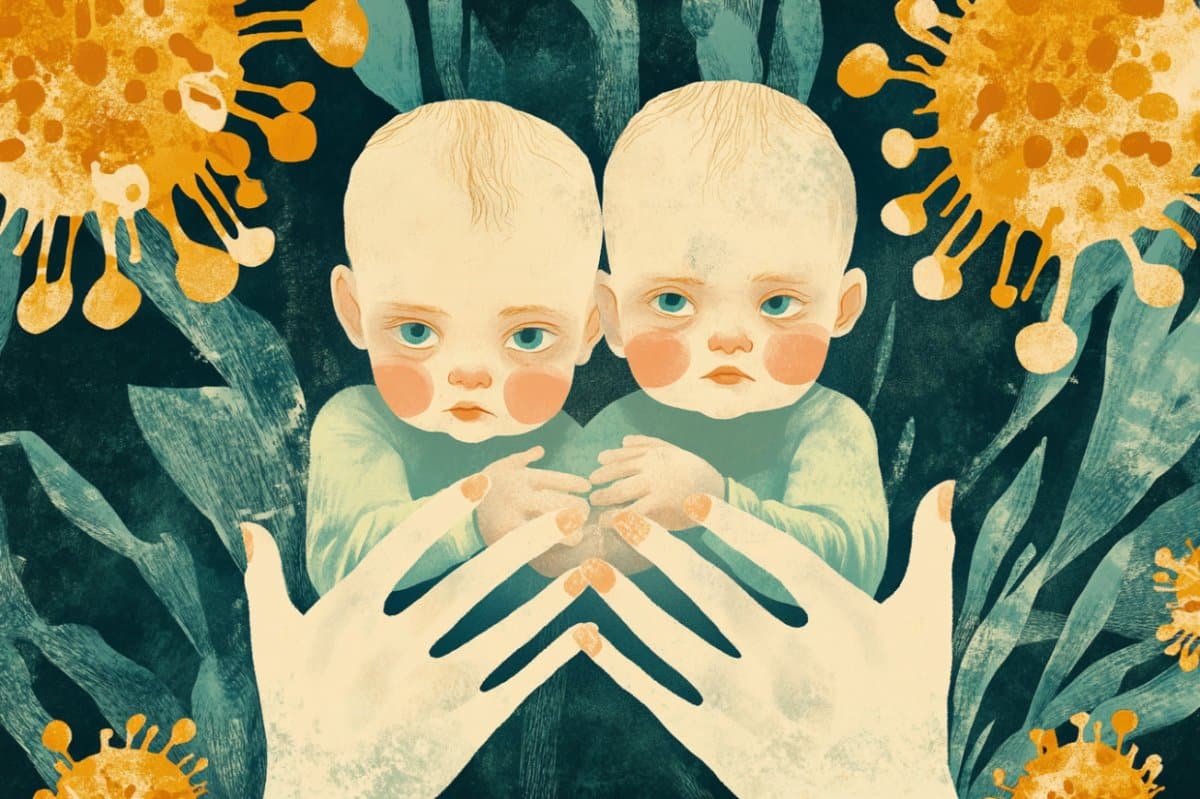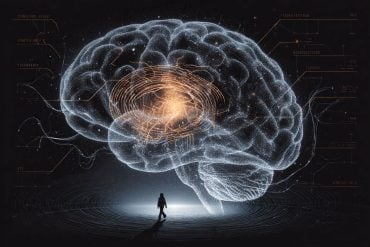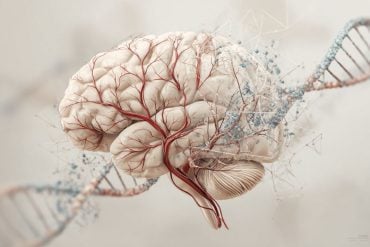Summary: Infants hospitalized with severe COVID-19 mount an immune response that looks entirely different from that of adults or older children. Researchers found both interferon responses and inflammation were elevated simultaneously—something never before observed in other viral infections.
T and B cells in these infants were still naïve yet highly activated, and some even produced their own strong antibody responses, surprising scientists given their age. These findings suggest that infants’ immune systems operate on distinct principles and may require age-specific strategies for treatment and prevention.
Key Facts:
- Dual Activation: Infants showed simultaneous high interferon and inflammation—unusual in viral infections.
- Naïve but Active: Despite never encountering infection, infants’ T and B cells were strongly activated.
- Independent Antibodies: Some infants produced robust SARS-CoV-2 antibodies, despite relying on maternal immunity.
Source: St. Jude Children’s Research Hospital
Infants hospitalized with severe COVID-19 have significantly different immune responses than adults or older children.
The finding comes from scientists at St. Jude Children’s Research Hospital, The Jackson Laboratory for Genomic Medicine, Weill Cornell Medicine, Nationwide Children’s Hospital, Icahn School of Medicine at Mt. Sinai and Yale University.
The researchers established the unique features of hospitalized infants’ immune cells during mild, moderate and severe COVID-19. The study may help identify better ways to protect infants from the disease.
It was published today in Nature Communications.
“This is one of the first studies to characterize the immune response in young infants hospitalized with severe COVID-19 with high-resolution,” said co-corresponding author Octavio Ramilo, MD, St. Jude Department of Infectious Diseases chair.
“We found that the infant immune system’s response to SARS-CoV-2 looks nothing like the immune response at any other age, highlighting the need to study infants, specifically, if we want to prevent severe infections and understand the unique features of the infant immune system.”
The collaborators studied immune cells from infants ranging from a few weeks to 16 months old who were hospitalized with mild, moderate or severe disease. They compared those cells to immune cells from healthy infants and a published cohort of adults hospitalized with COVID-19.
Monocytes (a type of white blood cell) from hospitalized infants appeared to have some similar features to those in adults infected with SARS-CoV-2. However, two other major white blood cell types, T and B cells, looked very different than in any other group. Hospitalized infants had more CD4 T cells.
Additionally, both T and B cells were still activated despite being largely naïve, having never encountered an infection. These infants’ T and B cells also expressed the antiviral interferon response, which led to high expression of interferon-stimulated genes at a much higher level than in older children or adults.
Conflicting signals from the infant immune system
Almost all infant immune cells expressed high levels of interferon-stimulated genes. At the same time, when the collaborators tested blood from these infants, they found high levels of inflammation-causing molecules (inflammatory cytokines), which differs from previous observations in infants with mild infection.
These findings challenge previous beliefs about infant immune responses to SARS-CoV-2.
“Normally, we think about the interferon and inflammation systems being in balance with each other,” said co-first author M. Asunción Mejías, MD, PhD, St. Jude Department of Infectious Diseases.
“If one is upregulated, the other is downregulated. But what we found was different. In infants, both systems were upregulated in the same cells, monocytes, which we’ve never seen before in other respiratory viral infections.”
The scientists identified the differences in these infants’ immune responses through single-cell RNA sequencing of white blood cells. RNA is a copy of instructions from DNA that lets cells express genes.
By looking at the RNA from individual cells, the researchers found the features unique to infants and compared them by disease severity. They found more severe disease associated with higher interferon and interferon-stimulated gene expression. High levels of inflammatory cytokines also correlated with more severe disease.
“It’s unclear whether these high levels of interferon, interferon-stimulated genes and inflammatory cytokines are protecting those with severe disease or contributing to it,” Ramilo said.
“But they are clearly playing a critical role, which will require further studies.”
Understanding infant antibody response is a field in its infancy
B cells produce specialized molecules called antibodies that target particular parts of viruses, bind to them and stop infections. An infant typically relies on their mother’s antibodies until they are about 6 months old.
During the pandemic, the researchers examined whether a mother’s immunity to non-SARS coronaviruses, which cause the common cold, would help protect infants.
“We found that these infants made a strong and robust new antibody response to SARS-CoV-2,” said Mejías.
“Their pre-existing maternal antibodies against the endemic coronaviruses did not block infection at all.”
The finding was surprising; some infants were as young as just a few weeks old and still created an antibody response to the virus. Infants are typically much older before they begin building such responses for other respiratory viruses.
The children in the study also lacked anti-interferon antibodies, which have been associated with severe COVID-19 in adults, emphasizing that lessons from adult immunity may not translate to infant immune responses.
“We showed that these hospitalized infants responded to SARS-CoV-2, but differently than anyone else,” Ramilo said. “As COVID-19 is now an endemic disease, we need to understand the unique features of the infant immune system better so we can find ways to help these babies through such infections during their first months of life.”
Authors and funding
The study’s other first author is Djamel Nehar-Belaid of The Jackson Laboratory for Genomic Medicine. The study’s other co-corresponding authors are Jacques Banchereau, The Jackson Laboratory for Genomic Medicine, and Virginia Pascual, Weill Cornell Medicine.
The study’s other authors are Zhaohui Xu, St. Jude; Radu Marches, Rushil Yerrabelli, Guo Chen and Duygu Ucar, The Jackson Laboratory for Genomic Medicine; Pablo Sánchez, Sara Mertz and Fang Ye, Nationwide Children’s Hospital; John Tsang, Yale University and Chan Zuckerberg Biohub and Teresa Aydillo, Lisa Miorin, Anastasija Cupic and Adolfo García-Sastre, Icahn School of Medicine at Mount Sinai.
Funding: The study was supported by grants from the National Institutes of Health (JAX Cancer Center P30CA034196, U01AI131386, U19AI135972, U19AI142733 and U19AI168631), start-up funds from the Jackson Laboratory, CRIPT (Center for Research on Influenza Pathogenesis and Transmission), National Institute of Allergy and Infectious Diseases (Center of Excellence for Influenza Research and Response contract #75N93021C00014) and ALSAC, the fundraising and awareness organization of St. Jude.
About this COVID-19 and neurodevelopment research news
Author: Michael Sheffield
Source: St. Jude Children’s Research Hospital
Contact: Michael Sheffield – St. Jude Children’s Research Hospital
Image: The image is credited to Neuroscience News
Original Research: Open access.
“Immune perturbations induced by SARS-CoV2 in infants vary with disease severity and differ from adults’ responses” by Octavio Ramilo et al. Nature Communications
Abstract
Immune perturbations induced by SARS-CoV2 in infants vary with disease severity and differ from adults’ responses
Differences in immune profiles of children and adults with COVID-19 have been previously described. However, no systematic studies have been reported from infants hospitalized with severe disease.
We applied a multidimensional approach to decipher the immune responses of SARS-CoV-2 infected infants (n = 26; 10 subacute, 11 moderate and 5 severe disease; median age = 1.6 months) and matched controls (n = 14; median age = 2 months).
Single cell (scRNA-seq) profiling of PBMCs revealed substantial alterations in cell composition in SARS-CoV-2 infected infants; with most cell-types switching to an interferon-stimulated gene (ISGhi) state including: (i) CD14+ monocytes co-expressing ISGs and inflammasome-related molecules, (ii) ISGhi naive CD4+ T cells, (iii) ISGhi proliferating cytotoxic CD8+ T cells, and (iv) ISGhi naive and transitional B cells.
We observe increased serum concentrations of both interferons and inflammatory cytokines in infected infants.
Antibody responses to SARS-CoV-2 are also consistently detected in the absence of anti-IFN autoantibodies. Compared with infected adults, infants display a similar ISG signature in monocytes but a markedly enhanced ISG signature in T and B cells.
These findings provide insights into the distinct immune responses to SARS-CoV-2 in the first year of life and underscore the importance of further defining the unique features of early life immunity.







